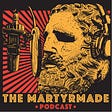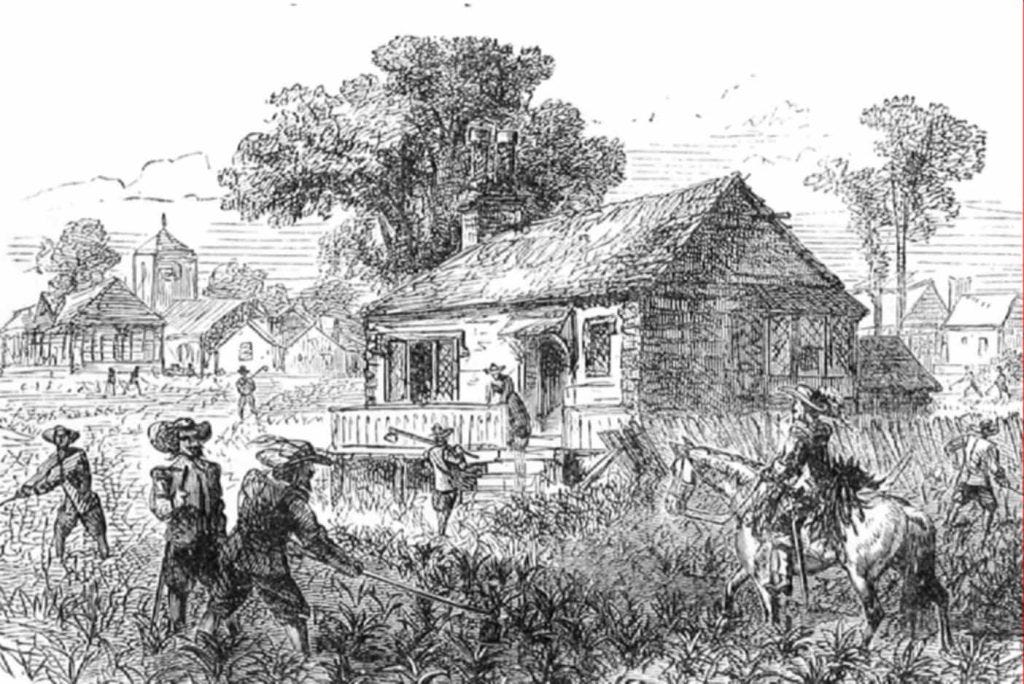The Peculiar Institution, pt. 8 (w/audio version for subscribers)The next installment of our series about the history of slavery and the leadup to the US Civil War*Note on the audio version: I’ve been getting over a cold, so if my voice is a little funky, that’s why.* A decade after the Virginia colony was founded, its investors had every reason to suspect they’d sunk their money into a lost cause. Martial law and work gangs got the colony through the difficult early years when bare survival was the paramount concern, but such conditions were not conducive to developing a flourishing community. By the end of the 1610s, the colony still did not grow enough food to feed itself, relations with the local Indians were touch-and-go, and the almost-all male population gave Jamestown the flavor of a military base or Old West mining camp. Reforms were desperately needed, though the investors disagreed on exactly which ones. The investors fell roughly into three camps, each with a different idea of what they wanted and needed from the colony. The first group was composed of very wealthy merchants for whom Virginia was just one asset in a diversified portfolio. These men had been the dominant group through the company’s first decade, and their wealth allowed them to be patient with a project that had thus far failed to produce a return. The second group was also willing to be patient, but were less interested in developing Virginia as a community than with using it as a base for their privately-funded pirating campaign against Spanish shipping. Finally, there were the smaller investors, men who had sunk a significant amount of their wealth into the Virginia colony, and needed to see something back soon or else face ruin. Their leader was Sir Edwin Sandys, son of the Archbishop of York and one of the most respected men in England. By 1618, he had acquired sufficient support within the company to get all parties to agree to a reorganization. In 1619, he was named Treasurer and effectively took control of the reform campaign. Sandys and his supporters envisioned a Virginia community modeled on those found in England, and directed toward the same industrious purposes. It would not do to have men coming and going with each passing ship, and many of the reforms were intended to give more colonists a greater and more lasting stake in the success of the colony. To that end, the draconian Laws, Moral and Martial, were thrown out, and replaced with a new constitution based on English common law. The governor and council, appointed by the Company to represent its interests and implement its policies, remained in place as the principal governing officers, but their powers would henceforth be limited, and exercised in coordination with an assembly elected by the colonists.¹ The assembly had the authority to make laws, subject to approval by the Company - a veto which seems to have been exercised rarely, if at all - and the Company pledged to submit its own policies for approval by the assembly. Thus was born the first representative assembly in English America. Next on Sandys’s agenda was land reform. The Virginia Company was short on hard cash, but it had more land than it knew what to do with… literally. Beginning in 1619, it began to put that resource to work, doling out parcels as private property. Any resident of Virginia who’d arrived before 1616 was to get 100 acres once his term of service was over, and those who arrived after 1616 got 50 acres. Land owned by the Company would now be cultivated by sharecropping tenants instead of indentured servants, although the Company continued to send large numbers of servants to be sold to private landowners. Company officers were given large tracts of land, along with tenants assigned to work it. The governor, for example, got 3,000 acres and 100 tenants, while the local treasurer got 1,500 acres and 50 tenants. Ministers got 100 acres and six tenants. Tenants were to hand over half their crop to the Company, or the officer to which they were assigned, for seven years, after which they would be given 50 acres, free and clear. Sandys recognized that land title alone was not sufficient to tie a man to a spot for good. Eventually he would want a family, and the first step toward getting one meant finding a woman. Unfortunately, there were precious few of them in Virginia, and those who were around were invariably already spoken for. So in 1619, the first of several batches of single women were sent to Virginia and sold as wives to any man who could afford to buy one. A crude matchmaking mechanism, perhaps, but families did begin to emerge, slowly but surely. The women were brought in to domesticate and civilize the men, and soon set about their work as best they knew how. When Powhatan, the Indian ruler of the tribes surrounding Jamestown, died that same year, colonial authorities used the opportunity to try to renew relations with his successor, Opechancanough. The colonists and the Indians had been at each other’s throats throughout the 1610s, so there was a large gap of trust that had to be filled. Sandys raised £550 to establish schools to board Indian children and teach them English skills, but he’d neglected to consult the Indians and was disappointed when they proved unwilling to give up their kids. Back in England, a beggar would have been grateful to find a berth for her children in a school that would raise them well and teach them a working skill. The English viewed the Indian way of life similarly to how they viewed that of beggars and fringe-dwellers back home - destitute, homeless, in need of help and guidance, not a lifestyle anyone would choose if only they knew a better way. Instead of the boarding school plan, Virginia’s governor agreed with Opechancanough that whole Indian families would come to live in the English settlements, in houses built by the colonists. Then the Company endowed a college for adolescent and young adult Indians, and sent George Thorpe, a respected former member of Parliament, to manage it. Thorpe was a strong supporter of the Company’s original goal of creating a harmonious biracial settlement in Virginia, and as the colony’s unofficial ambassador to the Indians, relations between the two sides seemed to thaw. Finally, 1619 was the year Virginia began exporting tobacco to England. The great thing about tobacco was that it could be grown on pretty much any piece of land in Virginia, and profit was limited only by how much land, and how many workers to cultivate it, a man could lay his hands on. The prices fetched by Virginia tobacco did not match the product coming from Cuba and other Spanish colonies, but it was lucrative enough that even a small landowner could expect to reap a tidy profit. Virginians became more proficient growers as they gained experience with the crop, but even in the early days there are records indicating that a single hard-working man, with the help of a son or two, could generate 1,000 pounds of tobacco in a season. At three shillings a pound, that man’s crop might sell for 150 pounds sterling - an amount which would take an average day-wage laborer in England nearly a decade to earn. Other records show that a man with three adult servants grew 2,800 pounds in a year, and another with six servants managed to grow 4,000 pounds. More and more trading ships made it a point to stop in Virginia to offload people and supplies in exchange for tobacco to be sold back in Europe. Colonists grew as much of it as they could, and the flow of goods through Virginia made it a more attractive prospect for others thinking about making it their home. In the first three years after taking over as Treasurer, Edwin Sandys managed to send about 3,500 new colonists to Virginia. Among them were more women, as well as many craftsmen and artisans, but the majority were bonded tenants and indentured servants. Taken together, these developments would seem to indicate that Virginia was finally getting its balance, which is why we are surprised to discover an apparent contradiction in the colony. In the five years after Sandys took over (1619-24), a flood of requests for more servants and tenants, as many as could possibly be rounded up, flowed back to the Company, alongside a separate flood of complaints that the colony never had enough supplies and provisions to meet its needs. How could it be that the colony consistently demanded more men when there never seemed to be enough to go around for the ones already there?... Listen to this episode with a 7-day free trialSubscribe to The Martyr Made Substack to listen to this post and get 7 days of free access to the full post archives. A subscription gets you:
|
Search thousands of free JavaScript snippets that you can quickly copy and paste into your web pages. Get free JavaScript tutorials, references, code, menus, calendars, popup windows, games, and much more.
The Peculiar Institution, pt. 8 (w/audio version for subscribers)
Subscribe to:
Post Comments (Atom)
When Bad People Make Good Art
I offer six guidelines on cancel culture ͏ ͏ ͏ ͏ ͏ ͏ ͏ ͏ ͏ ͏ ͏ ͏ ͏ ͏ ͏...
-
code.gs // 1. Enter sheet name where data is to be written below var SHEET_NAME = "Sheet1" ; // 2. Run > setup // // 3....



No comments:
Post a Comment